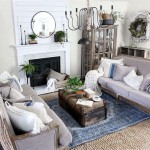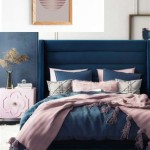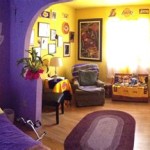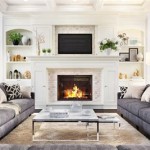Tiny Room Decoration Ideas: Maximizing Space and Style
Decorating a small room presents unique challenges. The limited square footage requires careful planning and execution to achieve a functional and aesthetically pleasing space. Successfully designing a tiny room necessitates maximizing every inch, using strategic design elements, and prioritizing multi-functional furniture. This article explores various decoration ideas specifically tailored for small rooms, focusing on space-saving techniques and visual tricks that create the illusion of a larger, more open environment.
Verticality: Utilizing Wall Space to its Full Potential
One of the most effective strategies for decorating a tiny room involves exploiting vertical space. Walls often remain underutilized, representing a significant untapped resource. Instead of focusing solely on floor-level furnishings, consider incorporating shelving units, wall-mounted cabinets, and strategically placed artwork to draw the eye upwards, thus creating a sense of height and expansiveness.
Floating shelves are a particularly versatile option. They offer storage and display space without occupying valuable floor area. These shelves can house books, plants, decorative items, or even functional necessities like kitchenware or bathroom supplies, depending on the room's purpose. When installing floating shelves, consider varying their depths and heights to create visual interest and avoid a monotonous, boxy appearance.
Wall-mounted cabinets provide concealed storage, ideal for decluttering and concealing items that contribute to visual clutter. Kitchens and bathrooms often benefit significantly from wall-mounted cabinets, freeing up countertops and floor space. Choose cabinets with sleek, minimalist designs to avoid overwhelming the room. Light-colored cabinets can further enhance the feeling of spaciousness.
Mirrors are powerful tools for creating the illusion of a larger room. A strategically placed mirror, particularly one that reflects a window or a light source, can instantly double the perceived size of the space. Consider a large, full-length mirror on a wall or a series of smaller mirrors arranged in a gallery-style display. Mirrors not only enhance the sense of spaciousness but also brighten the room by reflecting light.
Artwork can also contribute to the vertical appeal of a room. Choose pieces that are appropriately sized for the space and hang them at eye level to draw the eye upward. Vertical artwork, such as tall, narrow paintings or prints, can further emphasize the height of the room. Consider creating a gallery wall with a collection of smaller pieces to add visual interest and personality to the space.
Multi-Functional Furniture: Optimizing Space and Functionality
In a small room, every piece of furniture must serve a purpose, ideally more than one. Selecting multi-functional furniture is crucial for maximizing space and ensuring that the room remains functional and uncluttered. Options include storage beds, foldable desks, and convertible sofas.
Storage beds offer a discreet and efficient way to store bedding, clothing, or other items that would otherwise occupy valuable closet or drawer space. Platform beds with drawers built into the base or beds with lift-up mattresses provide ample storage without compromising comfort or aesthetics. These beds are particularly beneficial in bedrooms where closet space is limited.
Foldable desks are ideal for creating a workspace in a small room without permanently sacrificing space. These desks can be folded away when not in use, freeing up floor space for other activities. Wall-mounted foldable desks are particularly space-saving, as they take up minimal space when folded. These desks are suitable for home offices, study areas, or even dining spaces.
Convertible sofas, such as sleeper sofas or futons, provide seating during the day and transform into a bed at night. These sofas are perfect for guest rooms or studio apartments where space is limited. Choose a convertible sofa that is comfortable both as a sofa and as a bed. Consider the ease of conversion and the quality of the mattress when selecting a convertible sofa.
Ottomans with storage are another versatile option. They can serve as seating, footrests, or coffee tables, while also providing storage space for blankets, pillows, or other items. Choose an ottoman that complements the room's decor and provides sufficient storage for your needs. A set of nesting tables can also provide flexible surface space that can be easily stowed away when not in use.
Color Palette and Lighting: Creating an Open and Airy Atmosphere
The color palette and lighting play a crucial role in creating the perception of space in a small room. Light, neutral colors tend to visually expand a space, while dark colors can make a room feel smaller and more enclosed. Strategic lighting can also enhance the feeling of spaciousness and create a more inviting atmosphere.
Light, neutral colors, such as white, beige, cream, and light gray, reflect light and create a sense of openness. These colors make walls appear to recede, thus expanding the perceived size of the room. Consider painting walls, ceilings, and even furniture in light, neutral colors to maximize the effect. Use pops of color in accessories, such as pillows, throws, or artwork, to add visual interest and personality without overwhelming the space.
Monochromatic color schemes, where different shades of the same color are used throughout the room, can also create a sense of harmony and spaciousness. By avoiding contrasting colors, the boundaries of the room become less defined, making it feel larger. Choose a color that you find calming and appealing, and then incorporate different shades and textures of that color into the room's decor.
Proper lighting is essential for creating an open and airy atmosphere. Maximize natural light by keeping windows uncovered or using sheer curtains that allow light to filter through. Supplement natural light with artificial lighting, such as overhead fixtures, table lamps, and floor lamps. Layering different types of lighting can create a more dynamic and inviting atmosphere. Avoid using large, bulky lamps that take up valuable floor space. Instead, opt for wall-mounted sconces or slim, minimalist lamps.
Recessed lighting is a space-saving option that provides ample illumination without taking up any floor or surface space. These lights can be installed in the ceiling to provide general illumination or used to highlight specific areas of the room. Dimmable lights offer flexibility and allow you to adjust the lighting to suit your needs.
Under-cabinet lighting is particularly useful in kitchens and bathrooms, providing task lighting for countertops and other work surfaces. These lights can be installed underneath cabinets to illuminate the area below, making it easier to see what you are doing. They also add a touch of ambiance to the room.
By carefully considering the color palette and lighting, it is possible to transform even the smallest room into a bright, open, and inviting space.

110 Tiny Rooms Ideas Bedroom Design House Home Decor

46 Amazing Tiny Bedrooms You Ll Dream Of Sleeping In Small Bedroom S Room Decor
:strip_icc()/cdn.cliqueinc.com__cache__posts__84453__white-bedside-parsons-desk-814077-1460155027.700x0c-f1297b3c196846e080fc83485231d4fd-e1f162325fbc4cb69d3c426e938bc808.jpg?strip=all)
40 Best Small Bedroom Decorating And Décor Ideas

10 Creative Ways To Design A Small Room Maximise Space Livspace

Small Room Decorating Ideas To Get The Most Out Of Any Space Décor Aid

40 Small Bedrooms That Don T Skimp On Style Apartment Bedroom Design

Small Room Design How To Make Any Larger Nawy

Cool Seating Choices For A Home Office Decoración De Unas Habitaciones Estrechas Diseño Habitación Pequeña

Small Bedroom Design Ideas For Comfortable Retreat

Tiny Bedroom Ideas How To Decorate A Small Room







